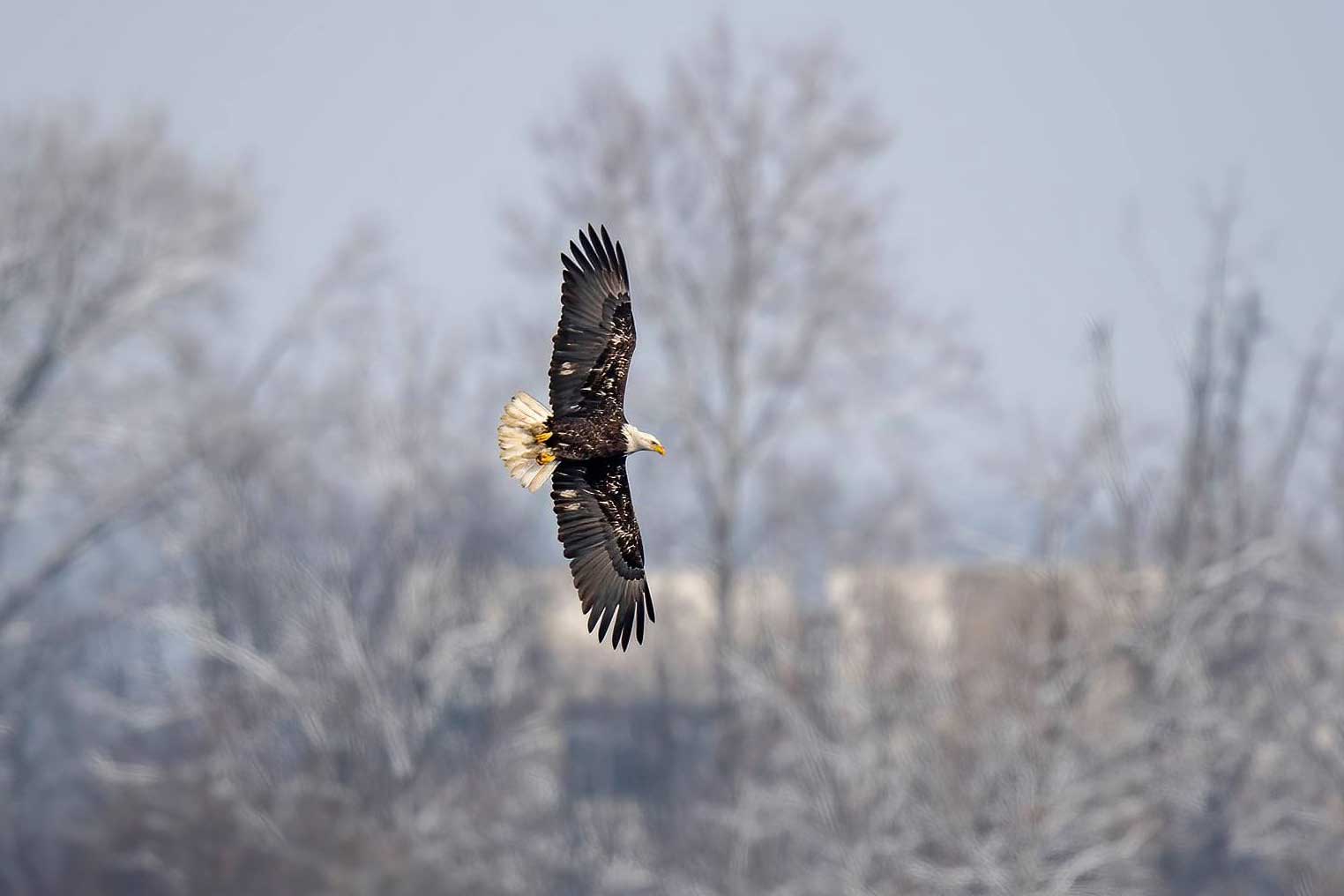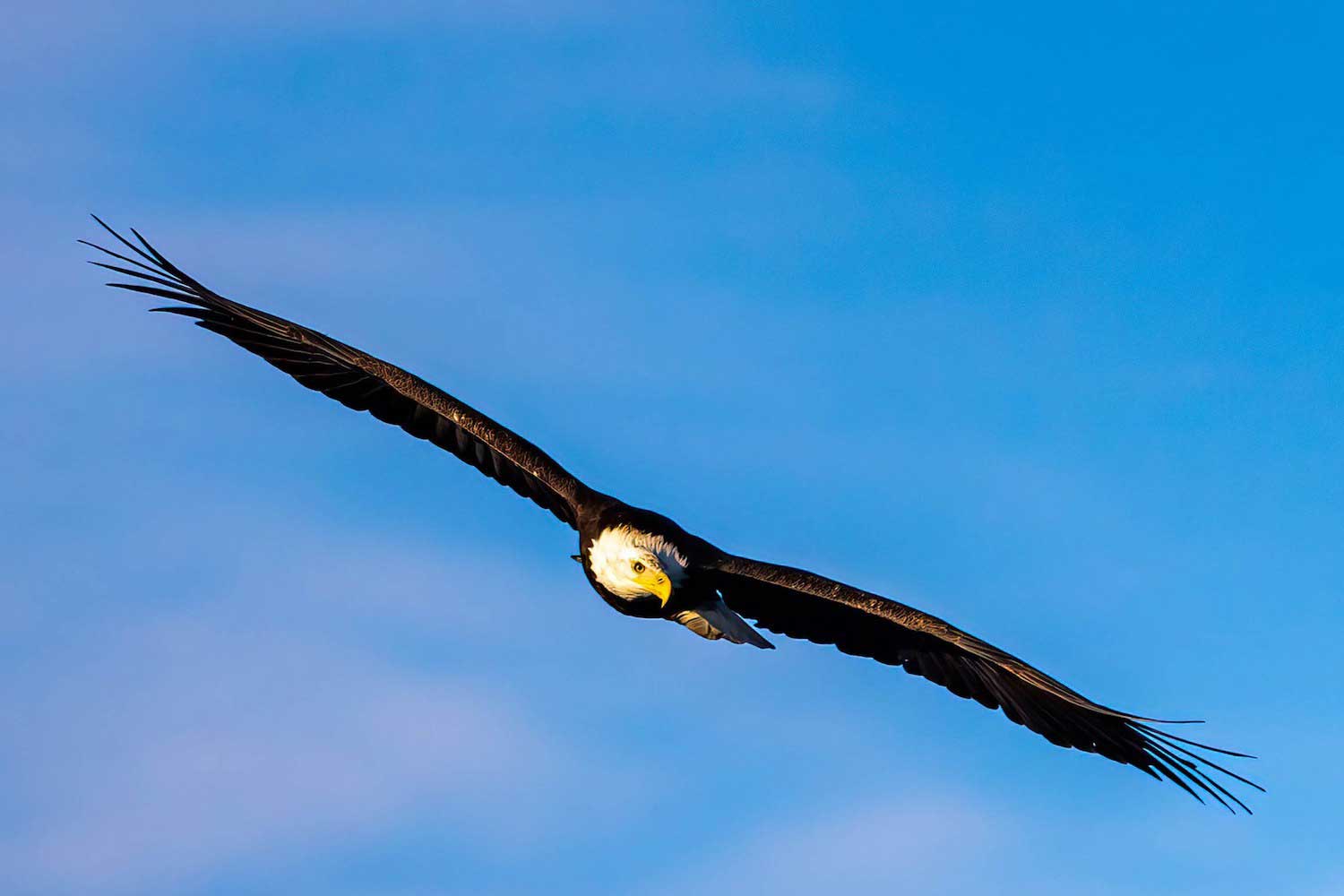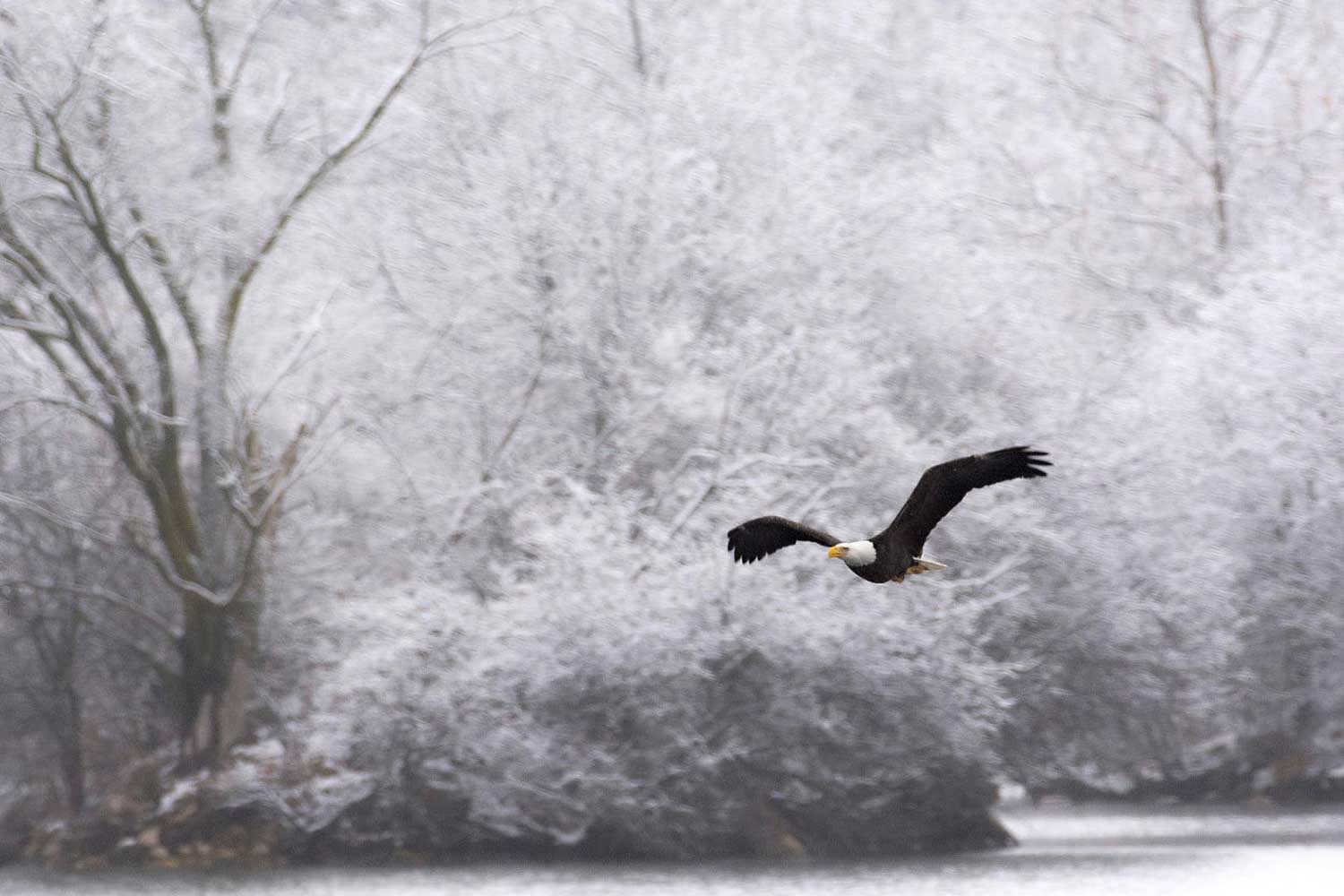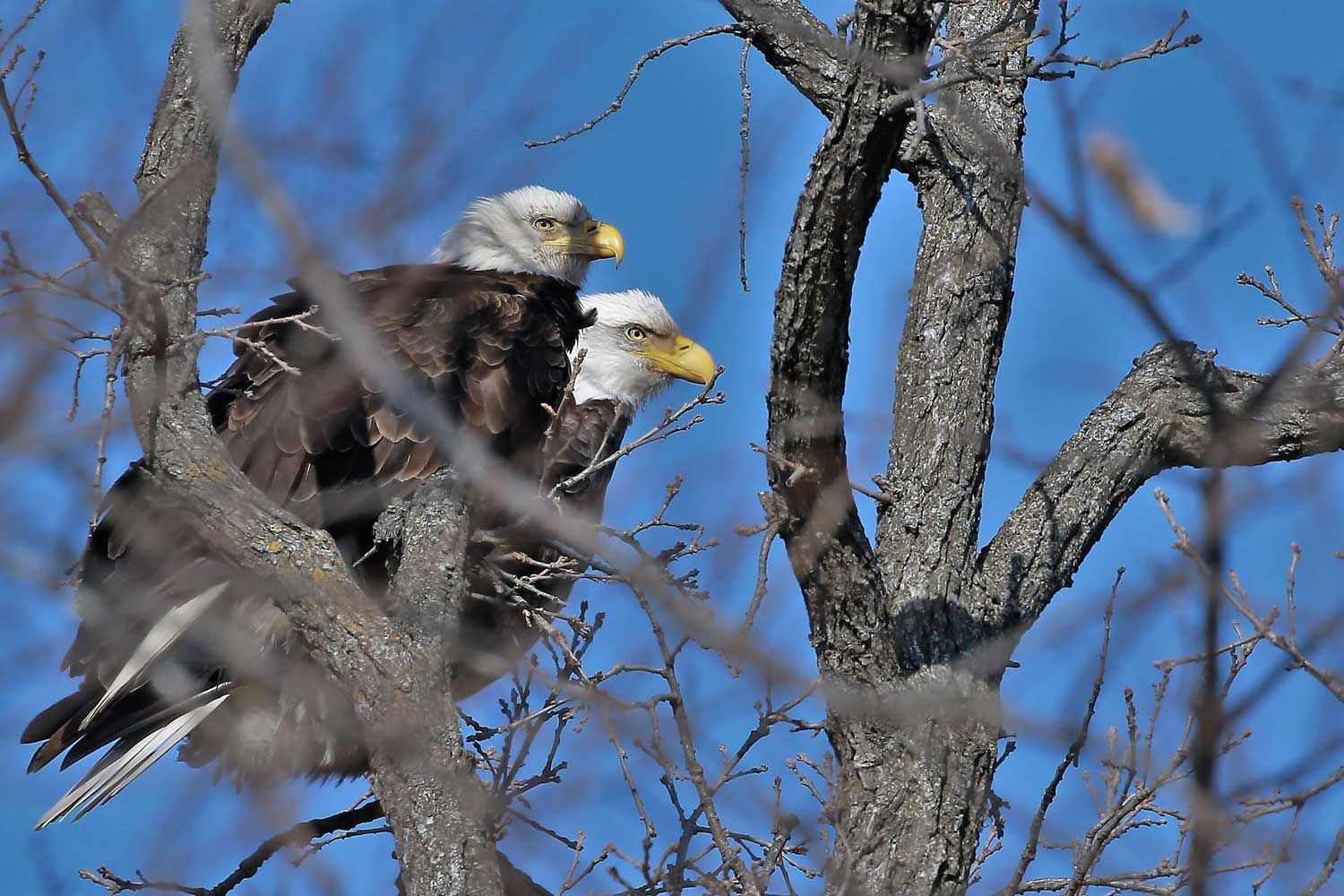Are you seeing bald eagles in the preserves? Give them some space

As the weather gets colder and streams and creeks start to freeze, bald eagles will be flocking to areas with open water.
That means the regal raptors are likely to be hanging around the Forest Preserve's Lake Renwick Preserve in Plainfield, McKinley Woods in Channahon, Rock Run Rookery Preserve in Joliet and Whalon Lake in Naperville.
When eagles gather, humans flock to view and photograph these exciting creatures as they cluster around the water. But it's important to remember that proper bird-watching etiquette requires humans to give the raptors wide berth.
Before you go eagle watching, please review the dos and don'ts of viewing or photographing these incredible raptors during programs or on your own.
Here are some tips to remember, should you venture out this winter to try to spot some eagles:
- Persistence pays off. Looking for eagles in a preserve they’re known to frequent doesn’t guarantee that you’ll see one. They can move quickly over large distances.
- While mature adults are easily identifiable with the naked eye, binoculars dramatically enhance the experience.
- Do not attempt to get close to an eagle. Responsible bird-watching etiquette states that a birder’s presence should not change the behavior of a bird. If a bird is reacting to you, then you are too close. Causing birds to flush causes stress to the birds and puts them in danger.
- Remember, bald eagles don’t get their trademark white heads and tails until between their fourth and fifth years. Immature bald eagles are mostly brown and are sometimes confused with golden eagles, which are uncommon in Illinois.
Keep your distance
Because of the sensitivity of bald eagles during various stages of courtship and nesting, the National Audubon Society has five rules for photographers who want to capture pictures of the birds.
In addition to being more sensitive to human activity during courtship, nest building and egg laying periods, nests should be avoided when nestlings are getting ready to fledge at around eight weeks because they could be startled and jump out of the nest.
The Audubon society also advises people to shoot photos from a blind and to stay at least 330 feet away from an active nest. "Pay close attention to whether a bird is changing its behavior or exhibiting signs of stress due to your presence (or your equipment). If it is, back off."
No one should ever use bait to draw eagles closer.
"Baiting bald eagles isn’t just ethically untenable, it’s also arguably illegal, as it could be interpreted as a violation of the Bald and Golden Eagle Protection Act," according to the Audubon society.
RELATED READING: FIVE THINGS YOU PROBABLY DON'T KNOW ABOUT BALD EAGLES
Eagle numbers increase
The odds of seeing eagles has grown through the years as their numbers have rebounded since the pesticide DDT was banned in the 1970s. And while many head north for the summer, some eagles stay in Illinois year-round and many winter here.
Wintering bald eagles occur throughout the country but are most abundant in the West and Midwest, according to the U.S. Fish and Wildlife Service. The majority of wintering eagles are found near open water where they feed on fish and waterfowl, often taking the dead, crippled or otherwise vulnerable animals.
As eagles become more abundant in Illinois, and the desire to view one of these majestic birds — or better yet, photograph one — grows, bird-watchers should take care to follow federal laws and birding ethics guidelines.
Eagles are protected from disturbance and harassment by the Bald and Golden Eagle Protection Act and the Migratory Bird Treaty Act. That means bird-watchers cannot do anything to disturb eagles or distract them from what they should be doing to successfully raise their young.
SUBSCRIBE TO OUR YOUTUBE CHANNEL
Do not disturb
Eagles are most sensitive to human activity during the courtship and nest building period, which takes place in the Midwest in late January and early February. Egg laying typically begins at the end of February, and that too is a very sensitive period where “human activity of even limited duration may cause nest desertion and abandonment of territory for the nesting season,” the U.S. Fish and Wildlife Service warns.
“Bald eagles may respond in a variety ways when they are disturbed by human activities. During the nest building period, for example, eagles may inadequately construct or repair their nest, or may abandon the nest, both of which can lead to failed nesting attempts. During the incubation and hatching period, human activities may startle adults or cause them to flush from the nest. Startling can damage eggs or injure young when the adults abruptly leave the nest.
“ … Human activities that cause any of these responses and lead to injury, a decrease in productivity, or nest abandonment could be considered disturbance under the Eagle Act and thus a violation of the Act.”
Civil penalties for a single violation of the Eagle Act include a maximum fine of $5,000 or one year imprisonment.









